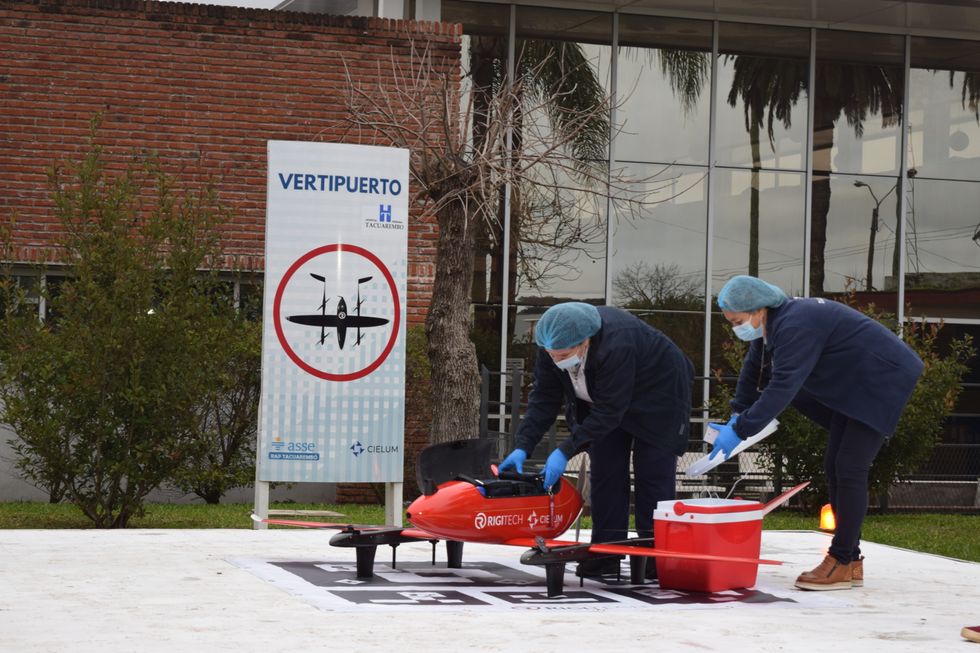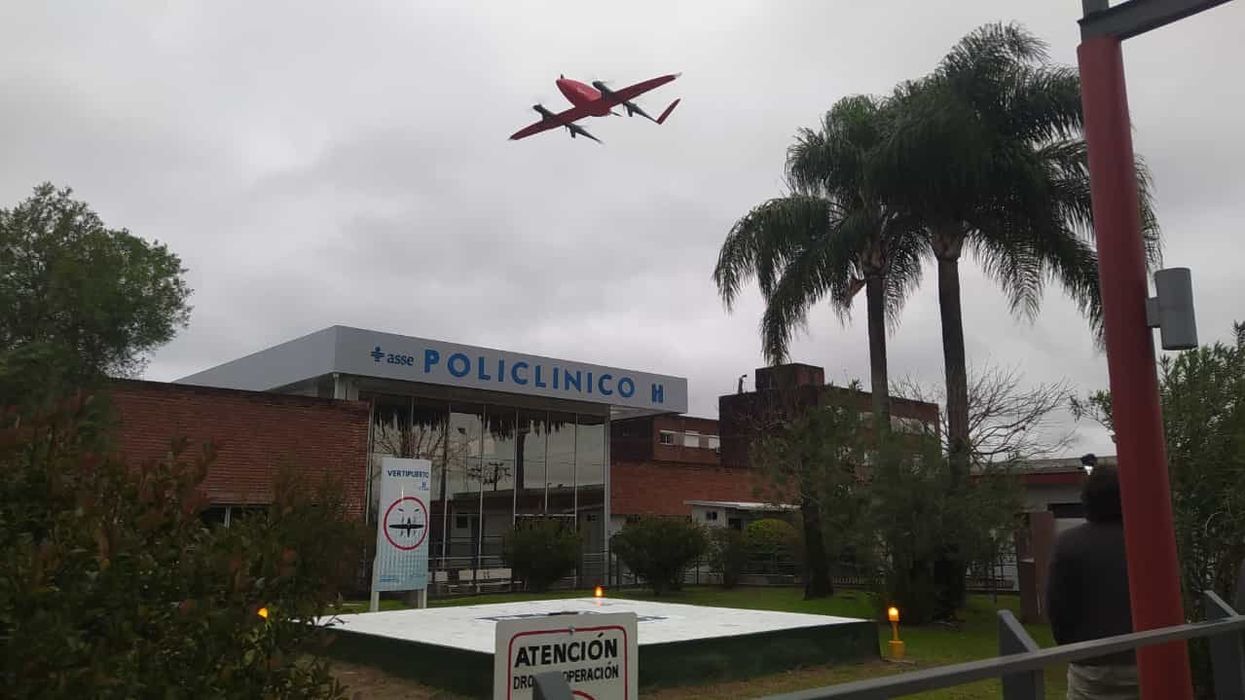We Should Resist Making “Synthetic Embryos” Too Realistic

A rendering of emerging medical technology.
Ethics needs context. So does science – specifically, science that aims to create bioengineered models of early human embryo development in a dish (hereafter synthetic embryos). Even the term "synthetic embryos" begs for an explanation. What are these? And why would anyone want to create them?
"This knowledge may help scientists understand how certain birth defects are formed and why miscarriages often occur."
First the research context. Synthetic embryos are stem cell-derived simulations of human post-implantation embryos that are designed to mimic a stage of early development called gastrulation. That's the stage—around 14-15 days after fertilization – when embryos begin to form a very primitive body plan (basic dorsal-ventral and anterior-posterior axes, and distinct cell lineages). Researchers are starting to create synthetic embryos in the lab – albeit imperfect and incomplete versions – to learn how gastrulation might unfold in real human embryos embedded unseen in the womb. This knowledge may help scientists understand how certain birth defects are formed and why miscarriages often occur soon after implantation. As such, synthetic embryos are meant to be models of human embryo development, not themselves actually embryos. But will synthetic embryos ever get to the point where they are practically the same thing as "natural" human embryos? That is my concern and why I think researchers should avoid creating synthetic embryos capable of doing everything natural embryos can do.
It may not be too difficult to prevent this slide from synthetic to real. Synthetic embryos must be created using sophisticated 3D culture systems that mimic the complex architecture of human embryos. These complex culture systems also have to incorporate precise microinjection systems to chemically trigger the symmetry-breaking events involved in early body plan formation. In short, synthetic embryos need a heavy dose of engineering to get their biological processes going and to help keep them going. And like most engineered entities, designs can be built into the system early to serve well-considered goals – in our case, the goal of not wanting to create synthetic embryos that are too realistic.
"If one wants to study how car engines work, one can model an engine without also modeling the wheels, transmission, and every other car part together."
A good example of this point is found a report published in Nature Communications where scientists created a human stem cell-based 3D model that faithfully recapitulates the biological events around post-implantation amniotic sac development. Importantly, however, the embryo model they developed lacked several key structures and therefore – despite its partial resemblance to an early human embryo – did not have complete human form and potential. While fulfilling their model's aim of revealing a previously inaccessible early developmental event, the team intentionally did not recreate the entire post-implantation human embryo because they did not want to provoke any ethical concerns, as the lead author told me personally. Besides, creating a complete synthetic embryo was not necessary or scientifically justified for the research question they were pursuing. This example goes to show that researchers can create a synthetic embryo to model specific developmental events they want to study without modeling every aspect of a developing embryo. Likewise – to use a somewhat imprecise but instructive analogy – if one wants to study how car engines work, one can model an engine without also modeling the wheels, transmission, and every other car part together.

A representative "synthetic embryo," which in some ways resembles a post-implantation embryo around 14 days after fertilization.
(Courtesy of Yue Shao)
But why should researchers resist creating complete synthetic embryos? To answer this, we need some policy context. Currently there is an embryo research rule in place – a law in many nations, in others a culturally accepted agreement – that intact human embryos must not be grown for research in the lab for longer than 14 consecutive days after fertilization or the formation of the primitive streak (a faint embryonic band that signals the start of gastrulation). This is commonly referred to as the 14-day rule. It was established in the UK decades ago to carve out a space for meritorious human embryo research while simultaneously assuring the public that researchers won't go too far in cultivating embryos to later developmental stages before destroying them at the end of their studies. Many citizens accepting of pre-implantation stage human embryo research would not have tolerated post-implantation stage embryo use. The 14-day rule was a line in the sand, drawn to protect the advancement of embryo research, which otherwise might have been stifled without this clear stopping point. To date, the 14-day rule has not been revoked anywhere in the world, although new research in extended natural embryo cultivation is starting to put some pressure on it.
"Perhaps the day will come when scientists don't have to apply for research funding under such a dark cloud of anti-science sentiment."
Why does this policy context matter? The creation of complete synthetic embryos could raise serious questions (some of them legal) about whether the 14-day rule applies to these lab entities. Although they can be constructed in far fewer than 14 days, they would, at least in theory, be capable of recapitulating all of a natural embryo's developmental events at the gastrulation stage, thus possibly violating the spirit of the 14-day rule. Embryo research laws and policies worldwide are not ready yet to tackle this issue. Furthermore, professional guidelines issued by the International Society for Stem Cell Research prohibit the culture of any "organized embryo-like cellular structures with human organismal potential" to be cultured past the formation of the primitive streak. Thus, researchers should wait until there is greater clarity on this point, or until the 14-day rule is revised through proper policy-making channels to explicitly exclude complete synthetic embryos from its reach.
I should be clear that I am not basing my recommendations on any anti-embryo-research position per se, or on any metaphysical position regarding the positive moral status of synthetic embryos. Rather, I am concerned about the potential backlash that research on complete synthetic embryos might bring to embryo research in general. I began this essay by saying that ethics needs context. The ethics of synthetic embryo research needs to be considered within the context of today's fraught political environment. Perhaps the day will come when scientists don't have to apply for research funding under such a dark cloud of anti-science sentiment. Until then, however, it is my hope that scientists can fulfill their research aims by working on an array of different but each purposefully incomplete synthetic embryo models to generate, in the aggregate of their published work, a unified portrait of human development such that biologically complete synthetic embryo models will not be necessary.
Editor's Note: Read a different viewpoint here written by a leading New York fertility doctor/researcher.
In this week's Friday Five, breathing this way may cut down on anxiety, a fasting regimen that could make you sick, this type of job makes men more virile, 3D printed hearts could save your life, and the role of metformin in preventing dementia.
The Friday Five covers five stories in research that you may have missed this week. There are plenty of controversies and troubling ethical issues in science – and we get into many of them in our online magazine – but this news roundup focuses on scientific creativity and progress to give you a therapeutic dose of inspiration headed into the weekend.
Here are the promising studies covered in this week's Friday Five, featuring interviews with Dr. David Spiegel, associate chair of psychiatry and behavioral sciences at Stanford, and Dr. Filip Swirski, professor of medicine and cardiology at the Icahn School of Medicine at Mount Sinai.
Listen on Apple | Listen on Spotify | Listen on Stitcher | Listen on Amazon | Listen on Google
Here are the promising studies covered in this week's Friday Five, featuring interviews with Dr. David Spiegel, associate chair of psychiatry and behavioral sciences at Stanford, and Dr. Filip Swirski, professor of medicine and cardiology at the Icahn School of Medicine at Mount Sinai.
- Breathing this way cuts down on anxiety*
- Could your fasting regimen make you sick?
- This type of job makes men more virile
- 3D printed hearts could save your life
- Yet another potential benefit of metformin
* This video with Dr. Andrew Huberman of Stanford shows exactly how to do the breathing practice.
This podcast originally aired on March 3, 2023.
Breakthrough drones deliver breast milk in rural Uruguay
A drone hovers over Tacuarembó hospital in Uruguay, carrying its precious cargo: breast milk intended for children in remote parts of the country.
Until three months ago, nurse Leopoldina Castelli used to send bottles of breast milk to nourish babies in the remote areas of Tacuarembó, in northern Uruguay, by way of ambulances or military trucks. That is, if the vehicles were available and the roads were passable, which wasn’t always the case. Now, five days per week, she stands by a runway at the hospital, located in Tacuarembó’s capital, watching a drone take off and disappear from view, carrying the milk to clinics that serve the babies’ families.
The drones can fly as far as 62 miles. Long distances and rough roads are no obstacles. The babies, whose mothers struggle to produce sufficient milk and cannot afford formula, now receive ample supplies for healthy growth. “Today we provided nourishment to a significantly larger number of children, and this is something that deeply moves me,” Castelli says.
About two decades ago, the Tacuarembó hospital established its own milk bank, supported by donations from mothers across Tacuarembó. Over the years, the bank has provided milk to infants immediately after birth. It's helped drive a “significant and sustained” decrease in infant mortality, says the hospital director, Ciro Ferreira.
But these children need breast milk throughout their first six months, if not longer, to prevent malnutrition and other illnesses that are prevalent in rural Tacuarembó. Ground transport isn't quick or reliable enough to meet this goal. It can take several hours, during which the milk may spoil due to a lack of refrigeration.
The battery-powered drones have been the difference-maker. The project to develop them, financed by the UNICEF Innovation Fund, is the first of its kind in Latin America. To Castelli, it's nothing short of a revolution. Tacuarembó Hospital, along with three rural clinics in the most impoverished part of Uruguay, are its leaders.
"This marks the first occasion when the public health system has been directly impacted [by our technology]," says Sebastián Macías, the CEO and co-founder of Cielum, an engineer at the University Republic, which collaborated on the technology with a Uruguayan company called Cielum and a Swiss company, Rigitech.
The drone can achieve a top speed of up to 68 miles per hour, is capable of flying in light rain, and can withstand winds of up to 30 miles per hour at a maximum altitude of 120 meters.
"We have succeeded in embracing the mothers from rural areas who were previously slipping through the cracks of the system," says Ferreira, the hospital director. He envisions an expansion of the service so it can improve health for children in other rural areas.

Nurses load the drone for breast milk delivery.
Sebastián Macías - Cielum
The star aircraft
The drone, which costs approximately $70,000, was specifically designed for the transportation of biological materials. Constructed from carbon fiber, it's three meters wide, two meters long and weighs 42 pounds when fully loaded. Additionally, it is equipped with a ballistic parachute to ensure a safe descent in case the technology fails in midair. Furthermore, it can achieve a top speed of 68 miles per hour, fly in light rain, and withstand winds of 30 miles per hour at a height of 120 meters.
Inside, the drones feature three refrigerated compartments that maintain a stable temperature and adhere to the United Nations’ standards for transporting perishable products. These compartments accommodate four gallons or 6.5 pounds of cargo. According to Macías, that's more than sufficient to carry a week’s worth of milk for one infant on just two flights, or 3.3 pounds of blood samples collected in a rural clinic.
“From an energy perspective, it serves as an efficient mode of transportation and helps reduce the carbon emissions associated with using an ambulance,” said Macías. Plus, the ambulance can remain available in the town.
Macías, who has led software development for the drone, and three other technicians have been trained to operate it. They ensure that the drone stays on course, monitor weather conditions and implement emergency changes when needed. The software displays the in-flight positions of the drones in relation to other aircraft. All agricultural planes in the region receive notification about the drone's flight path, departure and arrival times, and current location.
The future: doubling the drone's reach
Forty-five days after its inaugural flight, the drone is now making five flights per week. It serves two routes: 34 miles to Curtina and 31 miles to Tambores. The drone reaches Curtina in 50 minutes while ambulances take double that time, partly due to the subpar road conditions. Pueblo Ansina, located 40 miles from the state capital, will soon be introduced as the third destination.
Overall, the drone’s schedule is expected to become much busier, with plans to accomplish 20 weekly flights by the end of October and over 30 in 2024. Given the drone’s speed, Macías is contemplating using it to transport cancer medications as well.
“When it comes to using drones to save lives, for us, the sky is not the limit," says Ciro Ferreira, Tacuarembó hospital director.
In future trips to clinics in San Gregorio de Polanco and Caraguatá, the drone will be pushed to the limit. At these locations, a battery change will be necessary, but it's worth it. The route will cover up to 10 rural Tacuarembó clinics plus one hospital outside Tacuarembó, in Rivera, close to the border with Brazil. Currently, because of a shortage of ambulances, the delivery of pasteurized breast milk to Rivera only occurs every 15 days.
“The expansion to Rivera will include 100,000 more inhabitants, doubling the healthcare reach,” said Ferreira, the director of the Tacuarembó Hospital. In itself, Ferreira's hospital serves the medical needs of 500,000 people as one of the largest in Uruguay's interior.
Alejandro Del Estal, an aeronautical engineer at Rigitech, traveled from Europe to Tacuarembó to oversee the construction of the vertiports – the defined areas that can support drones’ take-off and landing – and the first flights. He pointed out that once the flight network between hospitals and rural polyclinics is complete in Uruguay, it will rank among the five most extensive drone routes in the world for any activity, including healthcare and commercial uses.
Cielum is already working on the long-term sustainability of the project. The aim is to have more drones operating in other rural regions in the western and northern parts of the country. The company has received inquiries from Argentina and Colombia, but, as Macías pointed out, they are exercising caution when making commitments. Expansion will depend on the development of each country’s regulations for airspace use.
For Ferreira, the advantages in Uruguay are evident: "This approach enables us to bridge the geographical gap, enhance healthcare accessibility, and reduce the time required for diagnosing and treating rural inhabitants, all without the necessity of them traveling to the hospital,” he says. "When it comes to using drones to save lives, for us, the sky is not the limit."

